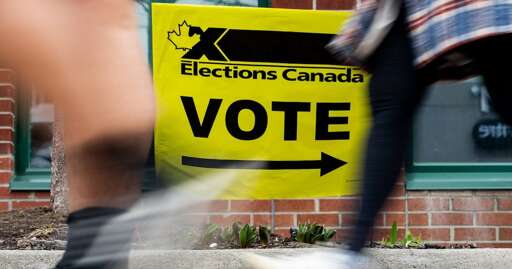OTTAWA — OTTAWA - Elections Canada says more than 68 per cent of eligible voters cast a ballot in the federal election – more than 19.5 million people.
While this election was widely expected to see increased turnout, it did not surpass the record set in March 1958, when 79.4 per cent of eligible Canadians voted.
But the nearly 68.7 per cent turnout was the best since the 1993 federal election, which saw 69.6 per cent of eligible voters cast a ballot.
Elections Canada says early estimates indicate 11 million people voted at their polling station or in their long-term care facility on election day.
The agency says nearly 7.3 million Canadians voted at advance polls while 1.2 million voted by special ballot.
Elections Canada does not gather demographics data so it’s not clear which groups turned out to vote, but it says postelection surveys can show which groups faced barriers to voting and what can be done to address them in future elections.
The Liberal party ended the election with 43.7 per cent of the total vote and 169 seats, while the Conservative party secured 41.3 per cent of the vote and 144 seats.
The Bloc Quebecois and the NDP both took 6.3 per cent of the vote, and will hold 22 and seven seats, respectively.



That discrepancy hit me as well. How are the seats determined?
Bloc Quebecois is only represented in Quebec while the NPD is represented across Canada.
So the Bloc had a lot of concentrated vote in Quebec, winning a lot of ridings while the NPD didn’t score well across Canada, not getting much riding.
First Past The Post create these discrepencies.
Ahhh, that makes sense. I’m American and hadn’t read/heard about that part of Canadian politics in awhile, so I appreciate the response!
Just so you know, America also has a first-past-the-post system. You just have the electoral college in addition to that, which we don’t have.
In addition to what gonzo mentioned, here is something else to consider:
There are only two significant political parties in the US. FPTP isn’t much of a big deal when it comes to a two-party system (since one party is guaranteed to win a 50+1 vote [50% plus one vote, for plural majority]), but you add a third or more, and suddenly you start realizing the flaws of such a system.
If three parties are split 33-33-34, the 34 wins 100% of the riding. This would be in spite of not having earned 66% of the vote. Imagine how much worse this becomes when you add a fourth party, or a fifth, etc. You might imagine, then, that people might start being angry at a democracy when ~80% of the electorate are angry at not voting for the winning candidate, which is entirely possible and has happened - if not in Canada, then at least famously in Britain in one of its ridings during the 2010s sometime there.
Thankfully, in one sense, you guys don’t have to deal with the majority of the electorate not electing the winning candidate. However, I don’t think that is outweighing all of the problems that the two-party system is leading to, to be quite fair…